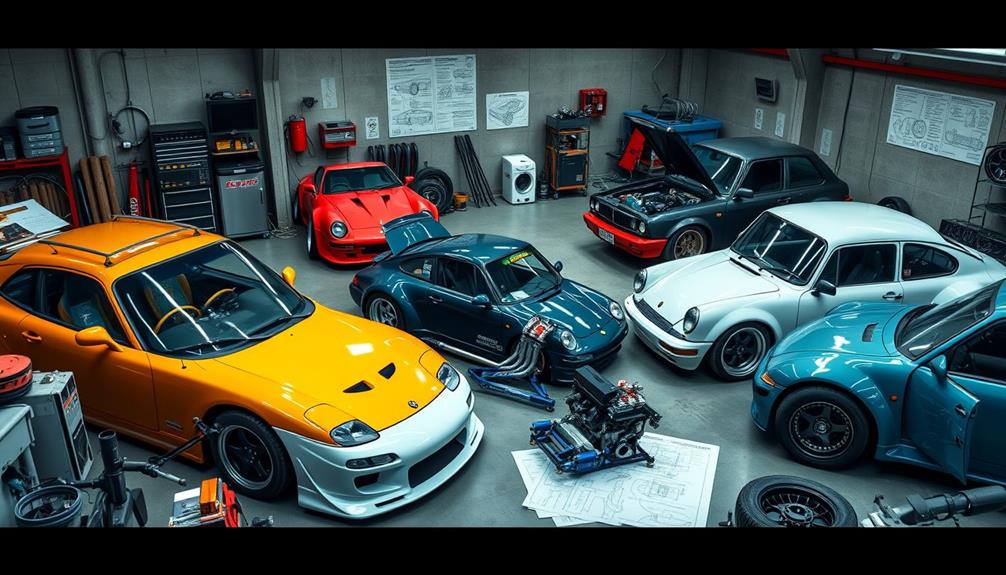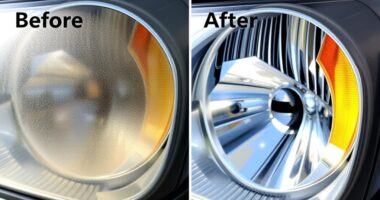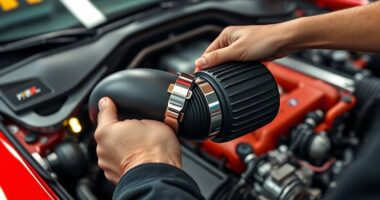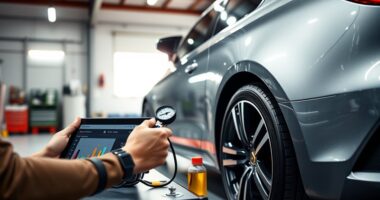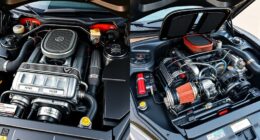Car tuning consists of several stages that systematically enhance your vehicle's performance. In Stage 1, you'll typically start with basic modifications like ECU remapping and air filter replacements for a power gain of about 20-30 bhp. Moving to Stage 2, you can add high-flow exhausts and larger intercoolers, boosting power by around 40 bhp. Stage 3 involves significant engine upgrades, often exceeding 100 bhp gains. As you progress through these stages, it's crucial to take into account supporting modifications like upgraded brakes and suspension. Curious to uncover more about each stage and what it entails?
Key Takeaways
- Car tuning consists of five stages, each representing increasing levels of modifications and performance enhancements, starting from basic to full race setups.
- Stage 1 includes simple modifications like ECU remapping, yielding power gains of approximately 20-30 bhp without major changes.
- Stage 2 upgrades involve high-flow exhaust systems and larger intercoolers, achieving around 40 bhp more than Stage 1.
- Stage 3 features significant modifications with power gains exceeding 100 bhp, requiring extensive upgrades to engine components.
- Each tuning stage necessitates supporting modifications such as upgraded brakes, suspension, and cooling systems to ensure optimal performance and safety.
Overview of Stage Tuning
Stage tuning offers a structured way to boost your vehicle's performance through a series of categorized upgrades. Each tuning stage represents a different level of modification, allowing you to choose enhancements based on your engine needs and performance goals.
Starting with stage 1 tuning, you typically see simple yet effective modifications like ECU remapping and replacing air filters or exhaust systems. These changes can lead to noticeable increases in horsepower and torque without heavy investment.
When you're ready to take it further, stage 2 tuning comes into play. This stage usually requires additional performance parts like intercoolers and turbochargers, along with extensive ECU adjustments to maximize gains.
As you explore these tuning stages, it's essential to understand that the definitions and expected outcomes can vary considerably among vehicles and tuners.
If you're serious about performance, stage 3 tuning involves considerable upgrades to engine components, such as camshafts and pistons. This stage can lead to substantial power increases but often comes at a higher cost and complexity.
Always consult with experts to guarantee you're making the right choices for your car tuning journey.
Stage 1 Tuning
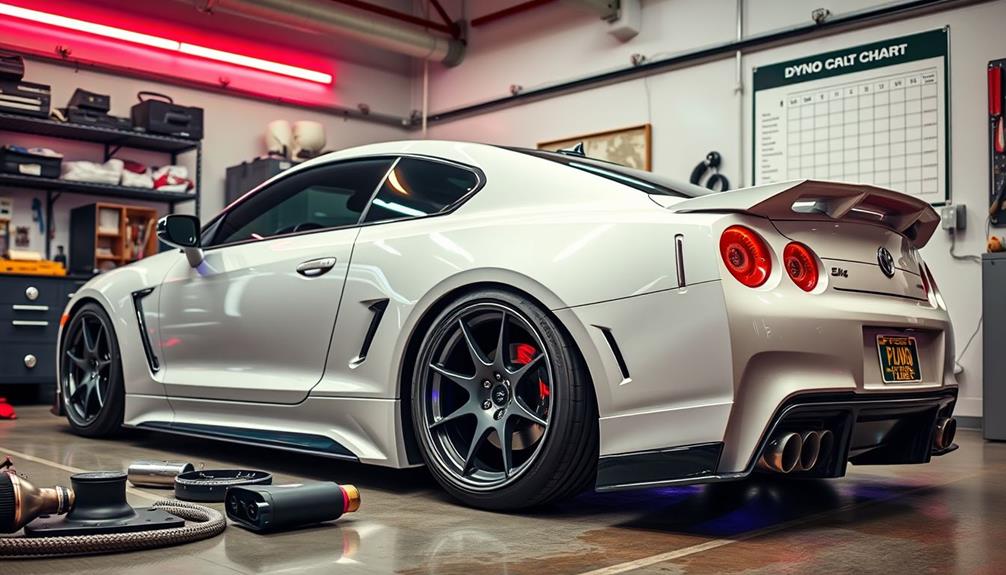
When you're looking to boost your vehicle's performance without going overboard, stage 1 tuning is the perfect starting point. This level of tuning involves basic modifications that enhance your car's capabilities while keeping most stock components intact.
One of the most important upgrades is ECU remapping, which adjusts the engine's settings to optimize performance.
At this stage, you'll typically see enhancements like performance air filters and an upgraded exhaust system. These tuning parts improve airflow and reduce back pressure, leading to power gains of around 20-30 horsepower.
You won't need to replace the original catalytic converter, so you can maintain compliance with emissions regulations while enjoying noticeable improvements in throttle response and fuel efficiency.
Stage 1 tuning is often regarded as the entry-level for car enthusiasts, providing a solid foundation for future upgrades.
By focusing on these essential modifications, you can enhance your vehicle's performance without diving into more complex changes.
It's a smart way to start your tuning journey, allowing you to enjoy a more spirited driving experience while keeping your car reliable and street-legal.
Stage 2 Tuning
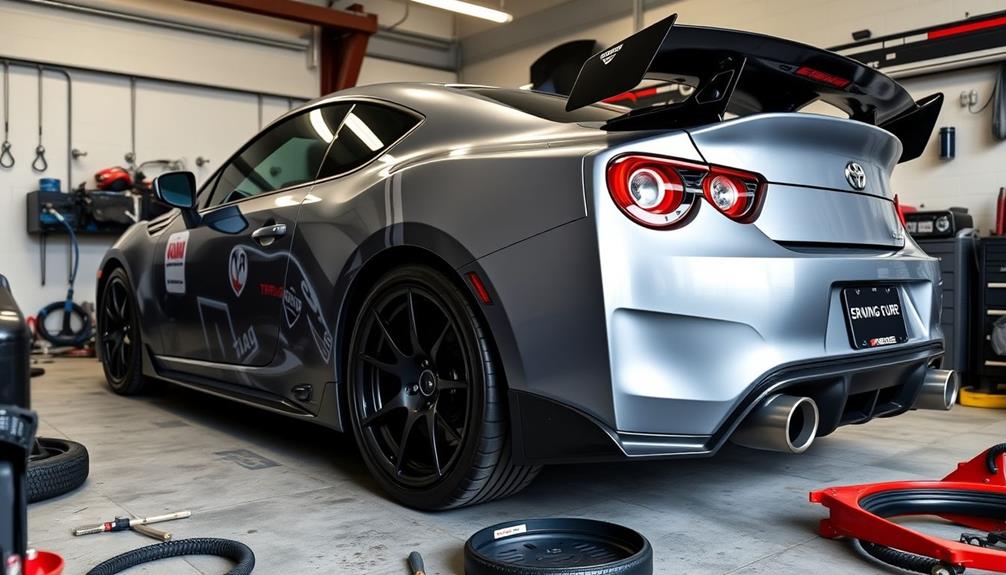
Pushing your vehicle's performance to a new level, stage 2 tuning introduces significant upgrades that go beyond manufacturer limits. This tuning stage typically requires extensive ECU remapping and the removal of exhaust restrictions, leading to enhanced efficiency and power gains of around 40 bhp or more compared to stage 1.
Key modifications you can expect include:
| Modification Type | Purpose | Benefits |
|---|---|---|
| High-Flow Exhaust Systems | Reduces back pressure | Improves exhaust flow |
| Upgraded Air Intakes | Increases airflow | Enhances engine performance |
| Performance Air Filters | guarantees proper airflow | Protects engine components |
To maximize your vehicle's potential, larger intercoolers are often necessary to prevent turbocharger choking. Regular maintenance checks become increasingly important at this stage, as the enhanced performance can put additional strain on engine components. By staying on top of these checks, you can make certain that your vehicle continues to thrive under the demands of stage 2 tuning.
Stage 3 Tuning
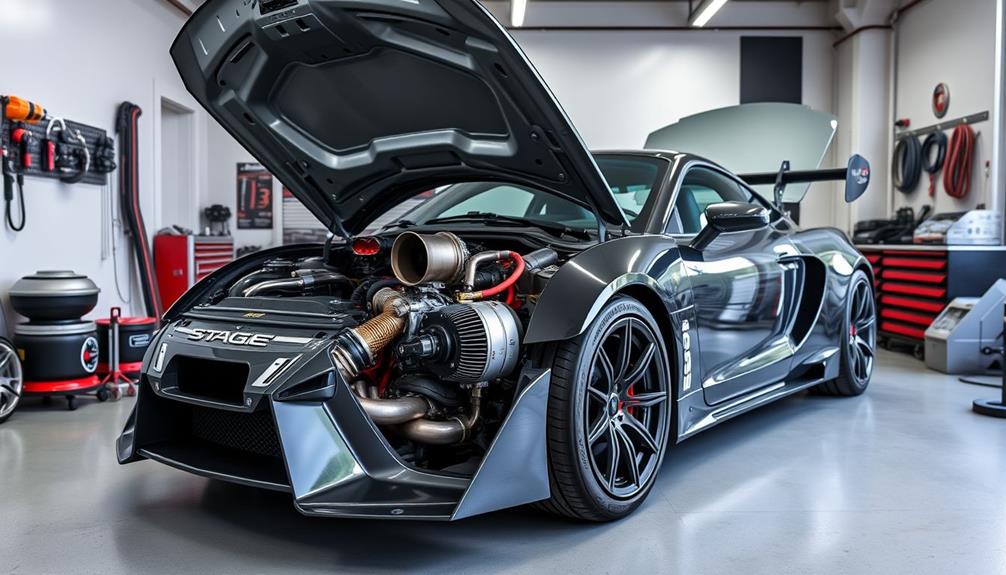
If you're ready to take your car's performance to the extreme, stage 3 tuning is where the real excitement begins. At this level, you're looking at significant modifications that push power levels well beyond stock capabilities.
To achieve this, you'll need extensive upgrades to your complete engine, including high-performance camshafts, pistons, and rods. These components can handle the massive horsepower gains, often exceeding 100 bhp compared to what you started with.
Additionally, you'll want to install a high-performance clutch and transmission to efficiently manage the enhanced torque and power delivery. Exhaust upgrades are also essential, improving airflow and ensuring your engine breathes easier while contributing to that aggressive sound you crave.
With the increased stress on your vehicle, additional cooling systems, like upgraded radiators or intercoolers, may be necessary to maintain ideal operating temperatures.
Keep in mind that stage 3 tuning is generally aimed at serious enthusiasts or motorsport applications, making it unsuitable for everyday driving. The complexity and costs of these modifications can be significant, but the thrill of a high-performance machine makes it all worthwhile.
Supporting Modifications
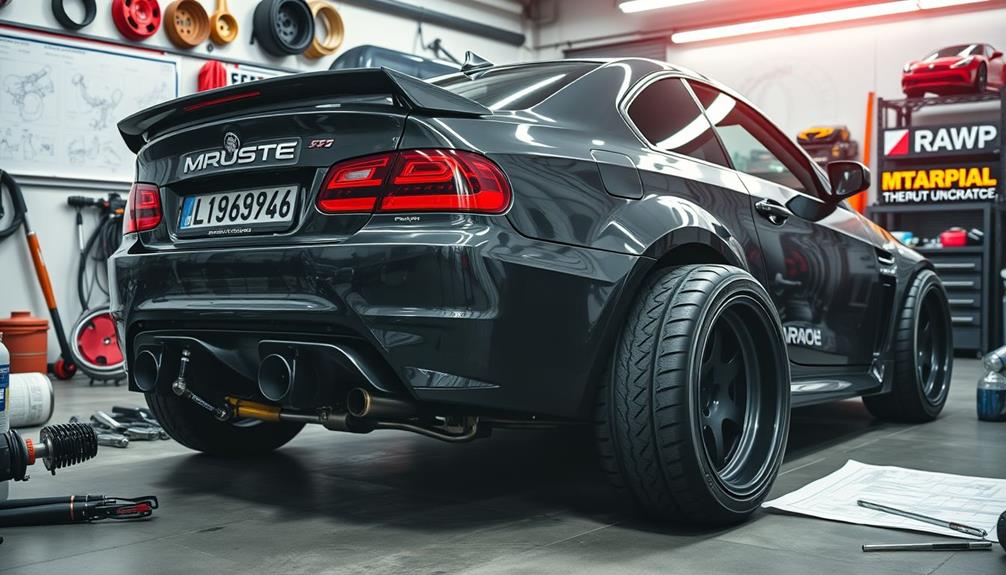
After reaching the exhilarating heights of stage 3 tuning, you can't overlook the importance of supporting modifications. These upgrades are fundamental for handling the increased power your vehicle now boasts. Without them, your performance gains can quickly become a liability.
Here are four key supporting modifications to keep in mind:
- Upgraded Brakes: To safely manage higher speeds, invest in larger disc sizes and performance brake pads. This will greatly reduce your stopping distances.
- Quality Tyres: High-performance tyres provide the grip and handling you need, especially when torque is increased. They'll help maintain control on the road.
- Aftermarket Clutches: The original clutch mightn't withstand the added torque from your tuning upgrades. Switch to an aftermarket clutch for reliable performance under stress.
- Enhanced Suspension Systems: Improved suspension systems guarantee better road contact during acceleration, which translates to stability and handling when dealing with increased power.
These supporting modifications are essential for optimizing your vehicle's performance and guaranteeing a safe driving experience.
Don't skimp on these upgrades; they're imperative for making the most of your tuning journey!
Power Gains From Tuning

Accessing the true potential of your vehicle starts with understanding the power gains from tuning.
Each tuning stage is designed to enhance your car's performance, with Stage 1 typically yielding around 20 bhp through simpler modifications focused on optimizing air and fuel injectors.
This stage often includes tweaks to the exhaust system, allowing for better airflow and efficiency.
As you progress to Stage 2, expect approximately 40 bhp gains.
This stage requires more extensive modifications, building on the groundwork laid in Stage 1.
You'll likely need additional parts and a more thorough tuning approach to fully realize these gains.
For those seeking maximum performance, Stage 3 can result in power boosts of up to 100 bhp or more, but it involves substantial upgrades and a meticulous tuning process.
Maintenance and Best Practices
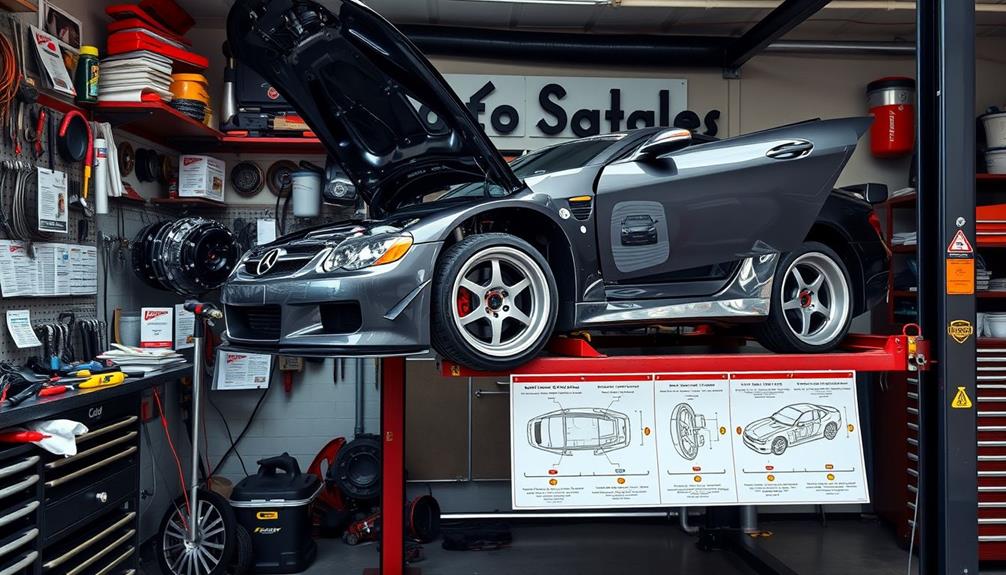
To keep your tuned vehicle performing at its best, regular maintenance is essential. Neglecting this can lead to engine damage and undermine the benefits of your performance tuning.
Here's how you can guarantee your ride stays in top shape:
- Monitoring Engine Temperatures: After modifications, keep an eye on your engine temperatures. Higher power levels can generate more heat, so verify your cooling system is up to the task.
- Frequent Checks on Upgraded Components: Since upgraded components often endure more strain, schedule more frequent maintenance checks for these parts to avoid premature wear.
- Implement a Maintenance Schedule: Create a thorough maintenance schedule that includes inspections for upgraded brakes, suspension, and drivetrain components. This not only enhances safety but also optimizes performance.
- Consult Experienced Tuners: Engage with experienced tuners who can provide tailored advice on maintenance practices specific to your modified vehicle. They can help you navigate the unique demands of your upgrades.
Frequently Asked Questions
What Are the Different Stages of Car Tuning?
When you explore car tuning stages, you'll find Stage 1 focuses on basic upgrades like ECU remapping. Stages progress to more complex modifications, enhancing performance markedly. Each stage requires specific parts to support increased power effectively. As you move through the stages of car tuning, you’ll find that Stage 2 typically includes additions like an upgraded intake and exhaust system. Stage 3 may involve more extensive changes such as turbocharger or supercharger upgrades. It’s important to carefully consider each stage of car tuning to ensure that all components work cohesively to achieve the desired level of performance.
What Is a Stage 4 Tune?
A Stage 4 tune means you've pushed your car to the limits. It involves extensive upgrades like new camshafts and turbochargers, maximizing power and efficiency, but you'll need specialized maintenance and might face legal restrictions.
What Is Stage 5 Tuning?
When you're taking the plunge into Stage 5 tuning, expect a complete engine rebuild with high-performance parts. It's a whole new ball game, pushing your vehicle to extreme limits, often sacrificing daily drivability and reliability.
What Is the Process of Tuning a Car?
Tuning your car involves adjusting the engine's software, replacing components, and optimizing performance. You'll start with simple upgrades, then progress to more extensive modifications. Regular maintenance's essential to guarantee reliability as power increases.
Conclusion
In the thrilling journey of car tuning, you're not just upgrading your ride; you're transforming it into a roaring beast that commands the road. With each stage, you feel the adrenaline rush as power surges beneath your foot. Remember, supporting modifications are your trusty co-pilots, ensuring your vehicle performs at its peak. By embracing maintenance and best practices, you'll keep that engine purring like a contented cat, ready to release its full potential at a moment's notice.
